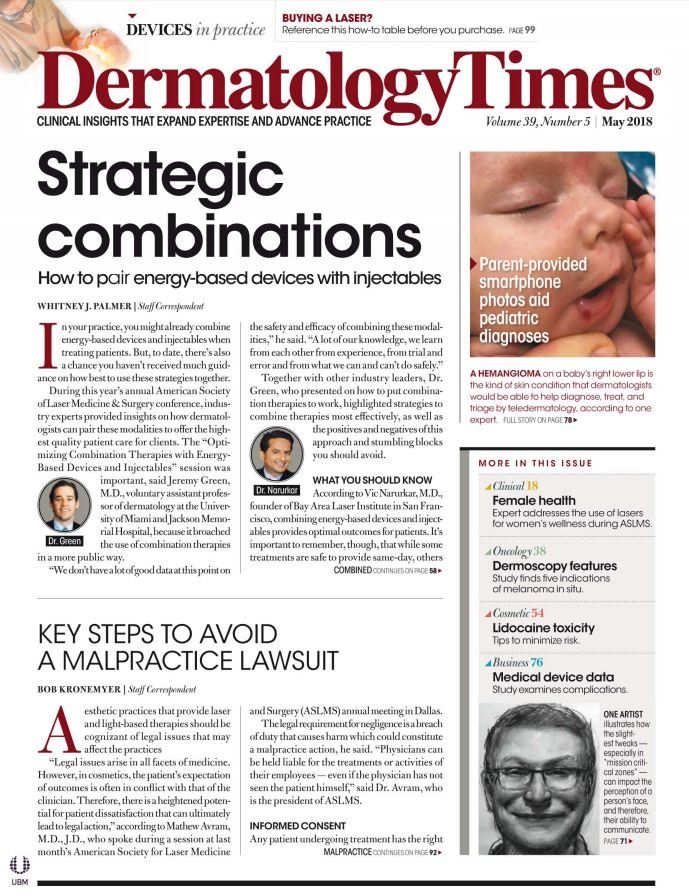- Acne
- Actinic Keratosis
- Aesthetics
- Alopecia
- Atopic Dermatitis
- Buy-and-Bill
- COVID-19
- Case-Based Roundtable
- Chronic Hand Eczema
- Chronic Spontaneous Urticaria
- Drug Watch
- Eczema
- General Dermatology
- Hidradenitis Suppurativa
- Melasma
- NP and PA
- Pediatric Dermatology
- Pigmentary Disorders
- Practice Management
- Precision Medicine and Biologics
- Prurigo Nodularis
- Psoriasis
- Psoriatic Arthritis
- Rare Disease
- Rosacea
- Skin Cancer
- Vitiligo
- Wound Care
Publication
Article
Dermatology Times
A single drug may control skin cancer treatment costs
Author(s):
A $78 single course of topical fluorouracil for keratinocyte carcinoma and actinic keratosis lesions, could lead to a savings in the hundreds of dollars in follow-up costs.
The decades’ old tried and true chemoprevention drug, topical fluorouracil 5% (5-FU), is an effective, cost-saving option for actinic keratosis treatment and squamous cell carcinoma prevention, according to a recent study of patients in the Veterans Administration (VA) health system.
“We found that veterans who were at high risk for keratinocyte carcinoma, or nonmelanoma skin cancer, and treated with 5-FU had lower health care costs related to treatment of this condition and the related condition, actinic keratosis, over a three-year period,” says the study’s corresponding author Jean Yoon, Ph.D., an investigator with the VA Palo Alto Health Care System. ”So, dermatologists should consider treating patients at high-risk for nonmelanoma skin cancer with 5-FU to reduce their patients’ risk of developing and being treated for these conditions.”
The study was published in the March issue of the Journal of the American Academy of Dermatology.
Nonmelanoma skin cancer, the most common cancer in the U.S. and one that is increasing in incidence, accounts for $4.8 billion in direct treatment costs in the U.S. annually.
Investment in effective keratinocyte carcinoma and actinic keratosis prevention might help to lower treatment costs. And while medications, including oral isotretinoin, acitretin and nicotinamide, as well as sunscreen, can prevent these skin cancers, their effectiveness often ends with discontinued use. A recent VA trial looking at nonmelanoma skin cancer, found squamous cell carcinoma rates, but not basal cell carcinoma rates, decreased significantly with short-term application of the topical chemoprevention after one year. The same treatment also significantly reduced the incidence of actinic keratoses in the study subjects for at least three years post treatment.
Dr. Yoon and colleagues compared the impact of a single topical 5-FU course on face and ears to a control group receiving vehicle control cream for reducing keratinocyte carcinoma risk. They studied a total 932 adults, 468 of which were treated with 5-FU, in the VA health care system who were at high risk for keratinocyte carcinoma, enrolling participants in the trial between June 2009 and September 2011, and completing the follow-up in June 2013. They looked at trial data and administrative data, including utilization and costs for outpatient procedures and related drugs, to measure differences between patients who were treated with 5-FU and those who weren’t.
They found that after one year, patients in the control arm were significantly more likely than those in the investigational group to have treatment encounters for squamous cell carcinoma. In the second and third year’s post-randomization, there were no differences in squamous cell carcinoma encounters between treatment groups.
There were no differences between procedures to treat basal cell carcinoma between groups after the first year. In the second year, the interventional arm had a higher mean number of encounters, but in the third year there were again no differences in that regard between groups. It’s unclear why basal cell carcinoma costs fluctuated in this way, according to the authors.
Treatment and dermatologic costs for patients in the investigational arm were a mean $2,106 compared to $2,444 among the controls over a one-year period. Spending on the interventional arm was $771 per patient less than in the control group after three years.
“A modest investment of $78 for a one-course treatment of 5-FU on the face/ears among patients at risk for [keratinocyte carcinoma] resulted in reduced costs of $741 per patient over three years of follow-up,” the authors write.
With about 90,000 VA patients being treated for nonmelanoma skin cancer in a given year, the researchers calculate using 5-FU could save the VA $69 million during three years.
It’s unclear whether patients treated in other systems such as Medicare would incur cost savings from 5-FU treatment, according to the authors. Medicare and other insurers pay more for 5-FU than the VA, so the reductions in cost using Medicare health care costs was not found to be statistically significant in the study, according to Dr. Yoon.
“We need to learn more about which patients benefit the most from 5-FU, but many VA patients who are at high risk for developing nonmelanoma skin cancer could be treated with 5-FU,” Dr. Yoon says. “In our study of VA patients, we found that 5-FU had significant effects on reducing treatment of certain kinds of nonmelanoma skin cancer and actinic keratosis, so we would expect similar results in a similar population. The VA gets certain drug discounts, so the cost savings that we found in the VA system did not apply outside the VA system.”
Given the magnitude of nonmelanoma skin cancer and actinic keratosis among veterans in the VA health care system and in other at-risk populations, the cost savings associated with chemoprevention in this study should dermatologists and others consider widespread use of 5-FU, the authors conclude.
REFERENCE
Yoon J, Phibbs CS, Chow A, Weinstock MA. “Impact of topical fluorouracil cream on costs of treating keratinocyte carcinoma (nonmelanoma skin cancer) and actinic keratosis,” Journal of the American Academy of Dermatology (JAAD). March 2, 2018. DOI: https://doi.org/10.1016/j.jaad.2018.02.058

Newsletter
Like what you’re reading? Subscribe to Dermatology Times for weekly updates on therapies, innovations, and real-world practice tips.











